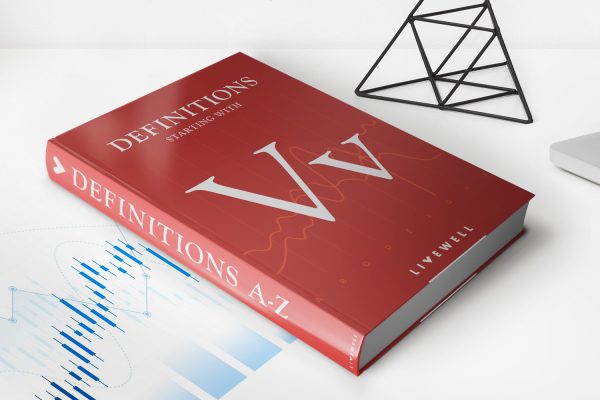

Finance
How Much Is A Veterans Pension
Published: November 27, 2023
Discover the financial benefits of a Veterans Pension and learn how much you may be eligible to receive. Plan your financial future with assistance designed for veterans.
(Many of the links in this article redirect to a specific reviewed product. Your purchase of these products through affiliate links helps to generate commission for LiveWell, at no extra cost. Learn more)
Table of Contents
Introduction
Welcome to our comprehensive guide on Veterans Pension! In this article, we will explore the ins and outs of the Veterans Pension program, including eligibility requirements, the calculation of pension amounts, how to apply, and additional benefits available to veterans.
The Veterans Pension program is an important financial resource provided by the Department of Veterans Affairs (VA) to honor and support our nation’s veterans. It aims to provide eligible veterans with supplemental income to assist them in meeting their basic needs.
Whether you have previously served in the armed forces or you are a family member seeking information on behalf of a veteran, understanding the Veterans Pension program can make a significant difference in the financial well-being of those who have selflessly served our country.
Throughout this article, we will provide you with key insights and guidance to help you navigate the Veterans Pension program and make informed decisions. So let’s dive in and discover how much a Veterans Pension is and how you can access this valuable benefit.
What is a Veterans Pension
A Veterans Pension is a needs-based benefit provided by the Department of Veterans Affairs (VA) to eligible veterans who have served in the military and meet certain criteria. It is designed to provide supplemental income to veterans who have limited or no income and who are unable to support themselves financially.
The Veterans Pension program is different from a military retirement pension, which is earned after serving a certain number of years in the military. The Veterans Pension is intended to assist eligible veterans who did not qualify for a military retirement pension but still require financial assistance.
One of the most important aspects of the Veterans Pension is that it is means-tested. This means that eligibility is based on the veteran’s income and assets, which must fall below a certain threshold set by the VA. The goal is to ensure that the pension is provided to those who truly need it.
In addition to income and asset limitations, there are other eligibility criteria that must be met to qualify for a Veterans Pension. These criteria include being a wartime veteran, having a limited or no income, being at least 65 years old (or permanently and totally disabled), and having served a minimum period of active duty.
It’s important to note that the Veterans Pension is not available to all veterans. It is designed specifically for veterans who do not qualify for other VA benefits or who have a low income. If a veteran is eligible for other, higher-paying VA benefits, they may not be eligible for the Veterans Pension.
Now that we have covered the basics of what a Veterans Pension entails, let’s delve deeper into the eligibility requirements and how the pension amount is calculated.
Eligibility for Veterans Pension
In order to be eligible for a Veterans Pension, you must meet specific criteria set by the Department of Veterans Affairs (VA). These criteria include:
- Wartime Service: You must have served at least 90 days of active duty, with at least one day served during a wartime period. The specific wartime periods recognized by the VA are as follows:
- World War II: December 7, 1941, to December 31, 1946
- Korean War: June 27, 1950, to January 31, 1955
- Vietnam War: February 28, 1961, to May 7, 1975 (extended to August 5, 1964, if served in the Republic of Vietnam)
- Gulf War: August 2, 1990, to a date yet to be determined
- Income and Asset Limitations: Your income and assets must fall below certain thresholds established by the VA. These thresholds are updated annually, so it’s important to stay informed about the current limits.
- Age or Disability: Generally, you must be at least 65 years old, or permanently and totally disabled at any age, to be eligible for the Veterans Pension. There are certain exceptions for veterans who are receiving Supplemental Security Income (SSI) or who are residing in nursing homes.
- Discharge Status: You must have been discharged from the military under conditions other than dishonorable.
It’s important to note that meeting the eligibility criteria does not guarantee that you will be approved for the Veterans Pension. The VA will review your application and assess your individual circumstances to determine if you meet all the necessary requirements.
If you believe you meet the eligibility criteria, it is recommended to gather all supporting documentation, such as your discharge papers, income statements, and medical records, before applying for the Veterans Pension.
Now that we have discussed the eligibility factors, let’s move on to understanding how the amount of the Veterans Pension is calculated.
Calculating the Veterans Pension Amount
The amount of the Veterans Pension is determined based on various factors, including your income, marital status, and number of dependents. The VA uses a formula to calculate the pension amount, taking into account the difference between your countable income and the maximum annual pension rate.
Countable income includes wages, retirement income, Social Security benefits, and any other income sources. However, certain expenses, such as unreimbursed medical expenses, can be deducted from your countable income to reduce the overall amount.
The maximum annual pension rate is established by the VA and varies depending on various factors, such as whether the veteran has a spouse, a dependent child, or is receiving aid and attendance or housebound benefits.
To give you an idea of how the calculation works, let’s consider an example. Suppose the maximum annual pension rate for a single veteran without any dependents is $13,931. If the veteran’s countable income is $10,000 per year, the difference between the countable income and the maximum annual pension rate is $3,931. This would be the annual pension amount that the veteran may be eligible for.
It’s worth noting that the exact pension amount may vary depending on individual circumstances, and the VA periodically adjusts the maximum annual pension rates. Therefore, it is crucial to consult with the VA or a qualified financial advisor to ensure accurate calculations of your potential pension amount.
In addition to the basic pension amount, veterans who require the aid and attendance of another person or who are housebound due to a disability may be eligible for an increased pension amount. These additional benefits can provide extra financial support for those who need assistance with daily activities or who are confined to their homes.
Understanding the calculation of the Veterans Pension amount is crucial for financial planning and determining eligibility. Now that we have covered the calculation process, let’s move on to the next section where we discuss the application process for the Veterans Pension.
Applying for Veterans Pension
When it comes to applying for a Veterans Pension, the first step is to gather all the necessary documentation and information to support your application. This includes your discharge papers, financial information, medical records, and any other supporting documents that demonstrate your eligibility.
Here is a step-by-step guide to help you navigate the application process:
- Obtain the Application Form: Start by obtaining the VA Form 21P-527EZ, which is the application form specifically for the Veterans Pension. You can download the form from the VA’s website or visit your local VA office to request a physical copy.
- Complete the Application Form: Fill out the application form accurately and provide all the required information. This includes personal details, military service information, financial information, and information about your dependents.
- Gather Supporting Documents: Collect all the necessary documentation to support your application, such as your discharge papers (DD-214), bank statements, income statements, medical records, and any other relevant documents that demonstrate your eligibility.
- Submit the Application: Once you have completed the application form and gathered all the supporting documents, submit your application to the nearest VA regional office. You can do this by mail or in person.
- Follow Up on the Application: After submitting your application, it’s essential to stay informed about the progress of your application. You can check the status of your application online through the VA’s website, or contact your local VA office for updates.
- Provide Additional Information if Required: In some cases, the VA may require additional information or documentation to process your application. If requested, make sure to promptly provide the necessary information to avoid delays in the processing of your application.
- Receive a Decision: Once the VA has reviewed your application and supporting documents, you will receive a decision regarding your eligibility for the Veterans Pension. This decision will outline the pension amount you may receive if approved.
It’s important to note that the application process for the Veterans Pension can be complex, and it may take some time to receive a decision. It is highly recommended to seek assistance from a veterans’ service organization or a qualified financial advisor to ensure that your application is completed accurately and to maximize your chances of approval.
Now that we have covered the application process, let’s explore additional benefits and resources available to veterans through the Veterans Pension program.
Additional Benefits and Resources for Veterans
While the Veterans Pension program provides financial support to eligible veterans, it is important to note that it is not the only benefit available. The Department of Veterans Affairs (VA) offers a range of additional benefits and resources to further assist veterans in various aspects of their lives.
Here are some key benefits and resources that veterans may be eligible for:
- Healthcare Benefits: The VA provides comprehensive healthcare services, including medical, dental, and mental health care, to eligible veterans. These services can help veterans maintain their overall well-being and address any medical conditions they may have.
- Education and Training: Veterans can access educational benefits through programs such as the Post-9/11 GI Bill, which provides funding for tuition, housing, and other educational expenses for eligible veterans pursuing higher education or vocational training.
- Home Loans: The VA offers home loan programs that provide favorable terms and assistance to veterans in purchasing, building, or refinancing homes. These programs aim to make homeownership more accessible for veterans.
- Disability Compensation: Veterans who have sustained service-related disabilities may be eligible for disability compensation. This benefit provides financial assistance to individuals who have disabilities resulting from their military service.
- Caregiver Support: The VA recognizes the vital role of caregivers in supporting veterans with disabilities. Programs like the Program of Comprehensive Assistance for Family Caregivers provide resources and support to caregivers who assist veterans with daily activities.
- Vocational Rehabilitation and Employment: Veterans with service-connected disabilities can receive vocational rehabilitation and employment services to help them find meaningful employment, develop job skills, and overcome employment barriers.
- Mental Health Support: The VA offers various mental health services, including counseling, therapy, and support groups, to address the unique mental health challenges faced by veterans. These services aim to improve mental well-being and provide the necessary support.
It’s important to note that each benefit program may have its own eligibility criteria and application process. Therefore, it is recommended to explore the specific requirements and application procedures for each benefit to fully understand and utilize all the resources available to you as a veteran.
By taking advantage of these additional benefits and resources, veterans can receive comprehensive support in various aspects of their lives, including physical health, education, housing, and employment.
As we wrap up our discussion on additional benefits and resources, let’s summarize the key points we have covered in this article.
Conclusion
In conclusion, the Veterans Pension program is a valuable financial resource provided by the Department of Veterans Affairs (VA) to eligible veterans who have served in the military and meet certain criteria. This needs-based pension aims to provide supplemental income to veterans who have limited or no income and require financial assistance.
Eligibility for the Veterans Pension is based on various factors, including wartime service, income and asset limitations, age or disability, and discharge status. It is a means-tested program designed to ensure that the pension is provided to those who truly need it.
The amount of the Veterans Pension is calculated based on the difference between countable income and the maximum annual pension rate set by the VA. Veterans who require aid and attendance or are housebound due to a disability may be eligible for an increased pension amount.
If you meet the eligibility criteria, it is important to gather all the necessary documentation and complete the application process accurately. Seek assistance from veterans’ service organizations or qualified financial advisors to ensure a smooth and successful application.
In addition to the Veterans Pension, there are various additional benefits and resources available to veterans, including healthcare benefits, education and training programs, home loan assistance, disability compensation, caregiver support, vocational rehabilitation and employment services, and mental health support.
By understanding and utilizing these resources, veterans can receive comprehensive support in various areas of their lives, ensuring their overall well-being and enhancing their quality of life.
We hope this comprehensive guide has provided you with a better understanding of the Veterans Pension program and the additional benefits available to veterans. Remember to stay informed, explore your eligibility, and take advantage of the resources that can support you as a valued veteran.
Thank you for your service to our country.














